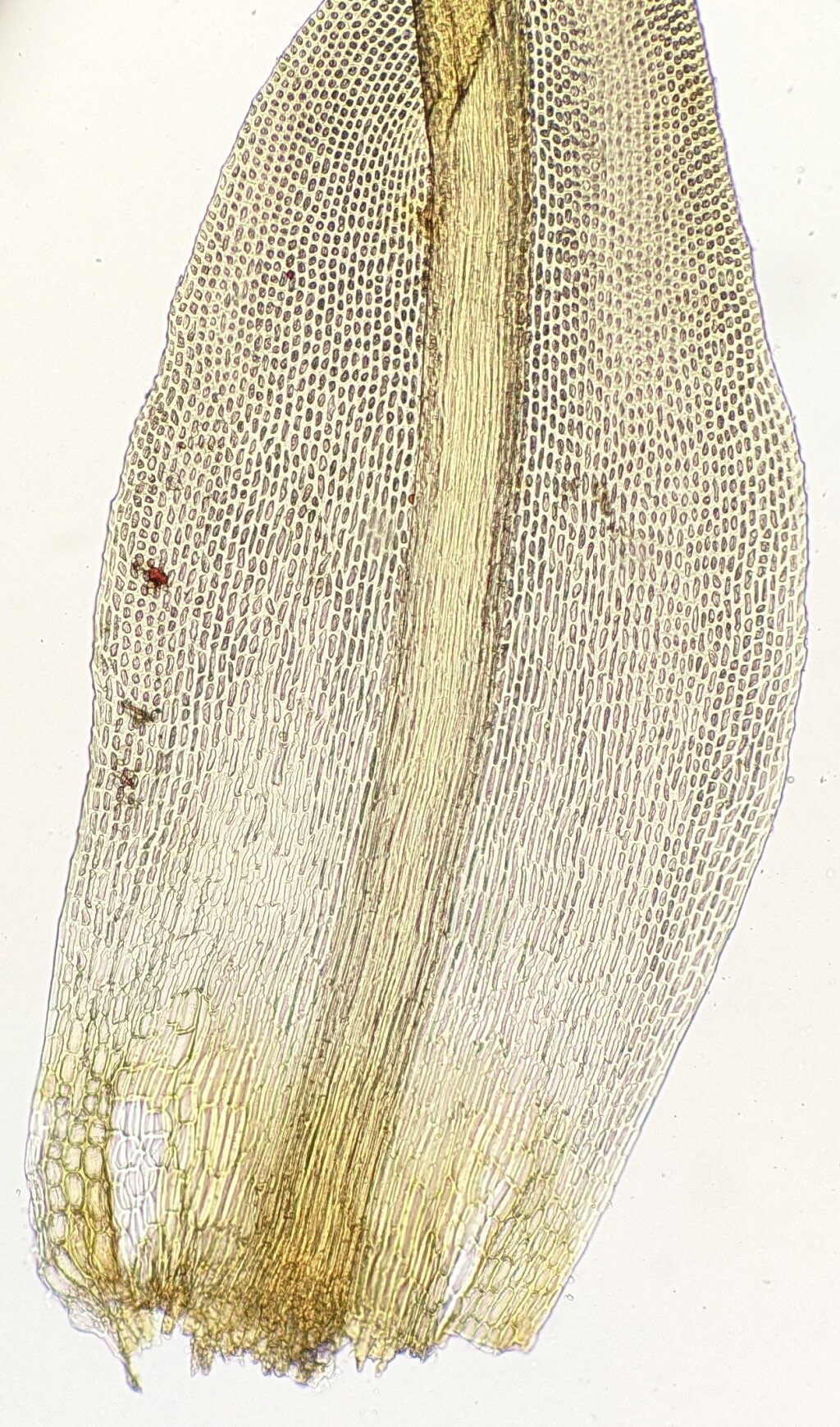Holomitrium
Pseudoautoicous, with dwarf males or rarely males similar size as females. Asexual propagules absent. Cushions, mats, turves or tufts on rocks and tree and tree fern trunks. Stem creeping, erect or ascending, simple or branching by forking, sometimes with flagelliferous branches in leaf axils, tomentose or with scattered rhizoids throughout (not in Victoria); central strand present. Leaves subulate from an ovate, lanceolate or obovate base, erect-spreading to falcate-secund, or rarely wide-spreading to squarrose (not in Victoria) when moist, crisped, spirally contorted or scarcely altered when dry; apex acuminate; costa subpercurrent or percurrent, sometimes broad and occupying around 1/3 width of leaf at base; margin entire, crenulate or serrate, plane, with or without a border; laminal cells irregular, oblate, quadrate or rectangular, becoming rectangular to linear toward base especially near costa, smooth, unistratose or bistratose along margins and near apex; alar cells strongly differentiated, oblong or subquadrate, inflated, yellow- to red-brown, unistratose. Perichaetia terminal. Capsule exserted, erect, straight, ovoid, ellipsoid, obloid or cylindric, smooth, with stomata at base, with a weakly differentiated persistent annulus. Calyptra cucullate, smooth, glabrous. Operculum rostrate. Peristome of 16 entire, fenestrate or irregularly split teeth.
Pantropical with around 30 species (Price 2002), with southern extensions to New Zealand and south-east Australia; two species in Victoria.
 Spinning
SpinningPrice, M. (2002). A new species of Holomitrium (Musci: Dicranaceae) from South America, and a key to Holomitrium in the Northern and Central Andes of South America. Novon 12: 241–244.


